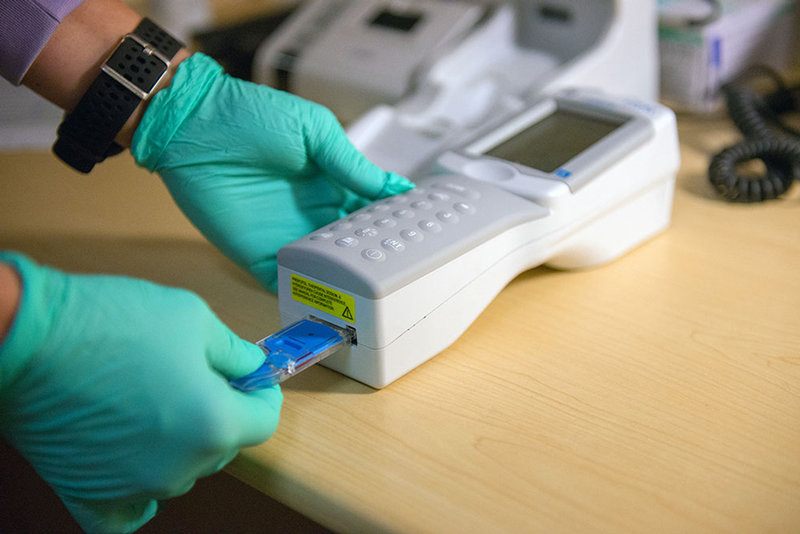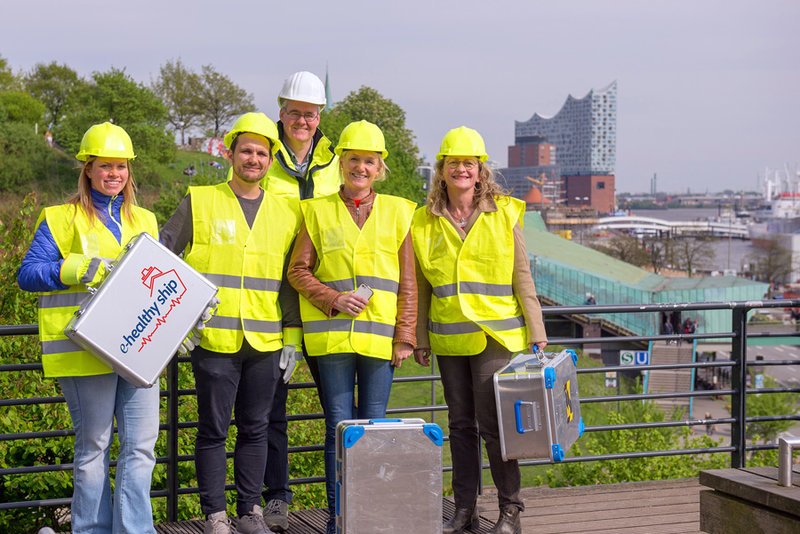Workforce
Can a new EU project improve health on the high seas?
The European Union has launched a new project designed to optimise health management on ships without doctors. In a time when seafarers still face health risks at sea, Joe Baker asks whether the new e-healthy digital platform could help lighten the load
The last few decades
have seen an increased effort to improve health and safety for seafarers. The International Labour Organization’s (ILO) Maritime Labour Convention compels participating states to ensure that “seafarers’ work environment on board ships promotes occupational safety and health”. Nowadays, qualified health officers are responsible for medical treatment and emergency intervention, and are required to pass a 40-hour medical refresher course every five years to meet international requirements.
But with merchant vessels rarely having a doctor on board, gaps in seafarer knowledge regarding nutrition and the difficulty of responding to emergencies at sea mean healthcare management remains an issue. According to parties involved in the European Union’s (EU) interdisciplinary e-healthy project, this is one area where digitilisation can play an important role.
Launched in 2017, the e-healthy ship project aims to adapt and optimise health management on merchant ships. A number of partners are participating in the project, including the Institute for Occupational and Maritime Medicine (ZfAM), software developer Hanseaticsoft GmbH, and shipping companies Peter Döhle Schiffahrts-KGand KG Reederei Roth GmbH & Co.
The ultimate goal will be the development of an IT-supported health platform, which nautical officers will be able to access on a central laptop or tablet PC. This platform will provide information and new capabilities via a range of health-related applications, covering the bases of emergency care, telemedicine, documentation, vaccinations, hygiene, training and nutrition.
Image courtesy of
Testing the waters
Over the course of the four-year e-healthy mission, an interdisciplinary team will survey the needs of seafarers, conceptualise and test the IT platform, and evaluate the use of this platform on merchant ships. A year after its launch, the project is in the survey phase, during which scientists are setting out on board four merchant ships to assess the health, nutrition and fitness status of seafarers, as well as the knowledge of culturally diverse crew members with regard to health issues.
Dr Marcus Oldenburg is one of four researchers tasked with going on board the vessels over a 14-day test period, the most recent of which concluded in mid-July. He says that despite many technical improvements during the last few decades, seafarers still live and work in a strenuous environment and are exposed to various stress factors.
“There are long and hard working days and regular as well as irregular night shifts,” he says. “Often the work has to be done under time pressure due to port stays, tides and container loading.”
“Seafarers are still exposed to noise and vibration, and although personal safety equipment is used, physical and psychological stress cannot be sufficiently reduced. Another important stressor concerning mental health is the separation from friends and family for up to nine months or even more.”
Crews are also being asked to fill in different anonymous questionnaires about well-being and mental health
According to Oldenburg, the aim of the ongoing surveys is to get a “holistic view of the seafarers’ health conditions” that will enable the development of comprehensive health materials. This involves collecting data on heart rates, blood and skin condition, activity during work and leisure times, daily food intake, and duration and quality of sleep. Crews are also being asked to fill in different anonymous questionnaires about well-being and mental health.
Data collected from the tests will allow scientists to develop health-related promotional materials, which nautical officers can use to encourage awareness of better health practices. It will also determine which modules will be most relevant on the IT platform ahead of the test phase.
“The investigations on board the test ships will help to see what kind of modules are really relevant,” says Kristin Apitz, of CONVIS, responsible for the project management and public relations of e-healthy ship. “All project partners have a lot of ideas in mind, but the first step is to draw concrete scientific conclusions about what will really support the officers on board.”

Analysis device to determine the blood values of the seafarer

The e-healthy ship team
Svein Kleven is senior vice president of engineering and technology for Rolls-Royce. Image courtesy of Rolls-Royce
Putting medical care online
While the technical details of the platform are still up in the air, its potential lies in two objectives: providing relevant healthcare information to seafarers; and making it possible to quickly establish a connection between shore and ship in the event of an emergency.
Hanseaticsoft GmbH has a distinguished pedigree in developing cloud-based solutions for the shipping industry. Just weeks before lead partner ZfAM approached the company, Hanseaticsoft GmbH began to develop its Crew Portal application to increase transparency and autonomy for seafarers, according to CEO Alexander Buchmann.
“We can incorporate a lot of the experiences we gathered while developing our own cloud-based system to create a system that is easy to use without any time-consuming training,” he adds. “We think that for the users to accept and appreciate using a solution, it has to be intuitively usable and bring joy.”
Buchmann says that the goal is to establish a ‘central pool’ for seafarers to manage illnesses on board, as well as administer medications. Health officers will be able to access the platform independently, enter cases of illness, look up appropriate medicine, and manage stock on board.
“To make this possible, we follow a strict cloud-based approach, meaning that there is no need to install any applications,” he says. “Using a cloud and web-based system, uniform information is always available and accessible via smartphone or tablet regardless of time or location. The crew can enter and access all of their personal medical data [by themselves] – leading to increased transparency and independence.”
Using a cloud and web-based system, uniform information is always available and accessible via smartphone or tablet
Apitz says that the creation of a digital platform will lead to a move away from paper-based processes, such as the requirement to fill in medical forms manually, and do away with hefty medical books ships are required to have on board. Most excitingly, the platform could facilitate telemedicine capabilities, which enable better communications between crew on merchant ships and medical professionals onshore.
Nevertheless, the data-heavy nature of telemedicine – specifically when it comes to video-conferencing with onshore medical professionals – means that on-board connectivity may have to be improved.
The implementation of an IT platform beyond the remit of the project is still a way off, with the development, testing and evaluation all expected to conclude by 2021. However, from what Oldenburg says about seafarers’ willingness to participate in the project, there’s clearly recognition from the industry that a digital method could be the answer.
“One big challenge is to gain the attention, interest and trust of the crew to join our project and to participate in the different examinations and questionnaires,” says Oldenburg. “It is emphasised that every part of our research is entirely voluntary and all collected data is treated absolutely confidentially.”
“However, after finishing the second examination aboard I can conclude that the crews of both vessels cooperated extremely well, offered us deep insights into their daily life, supported our work and tried to make our stay on board as comfortable as possible.”